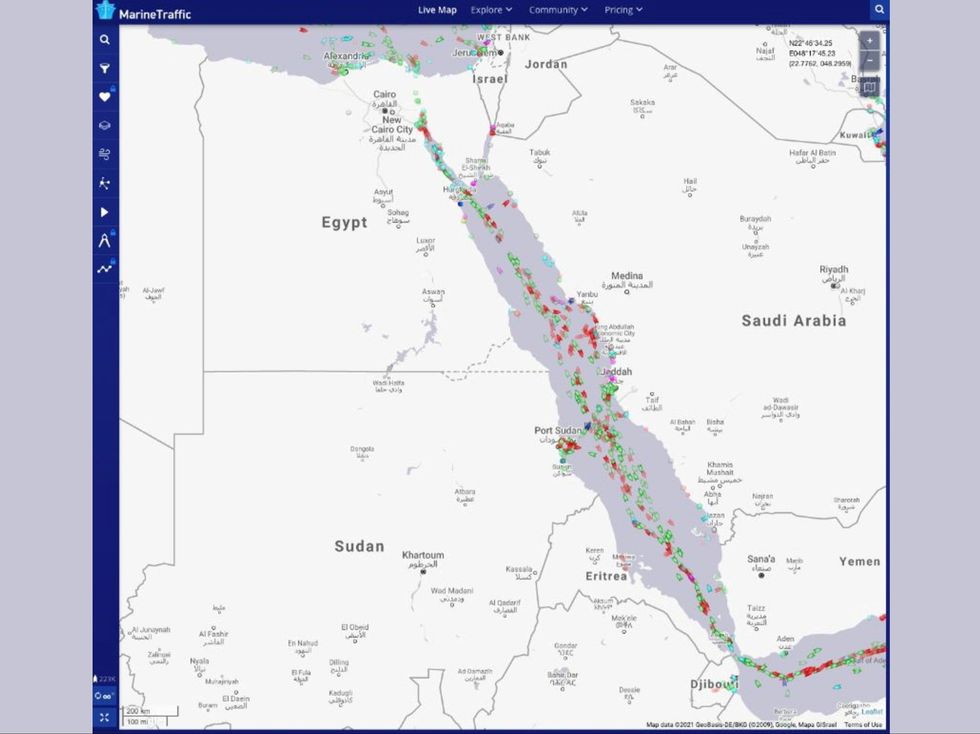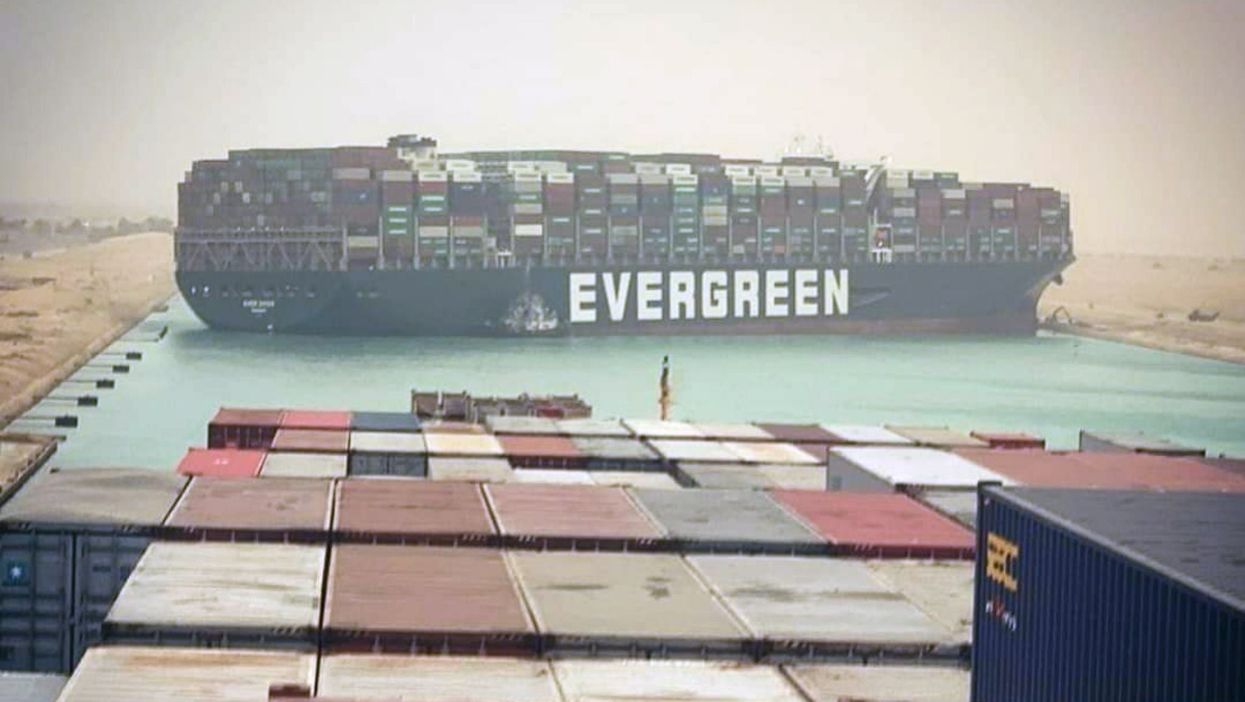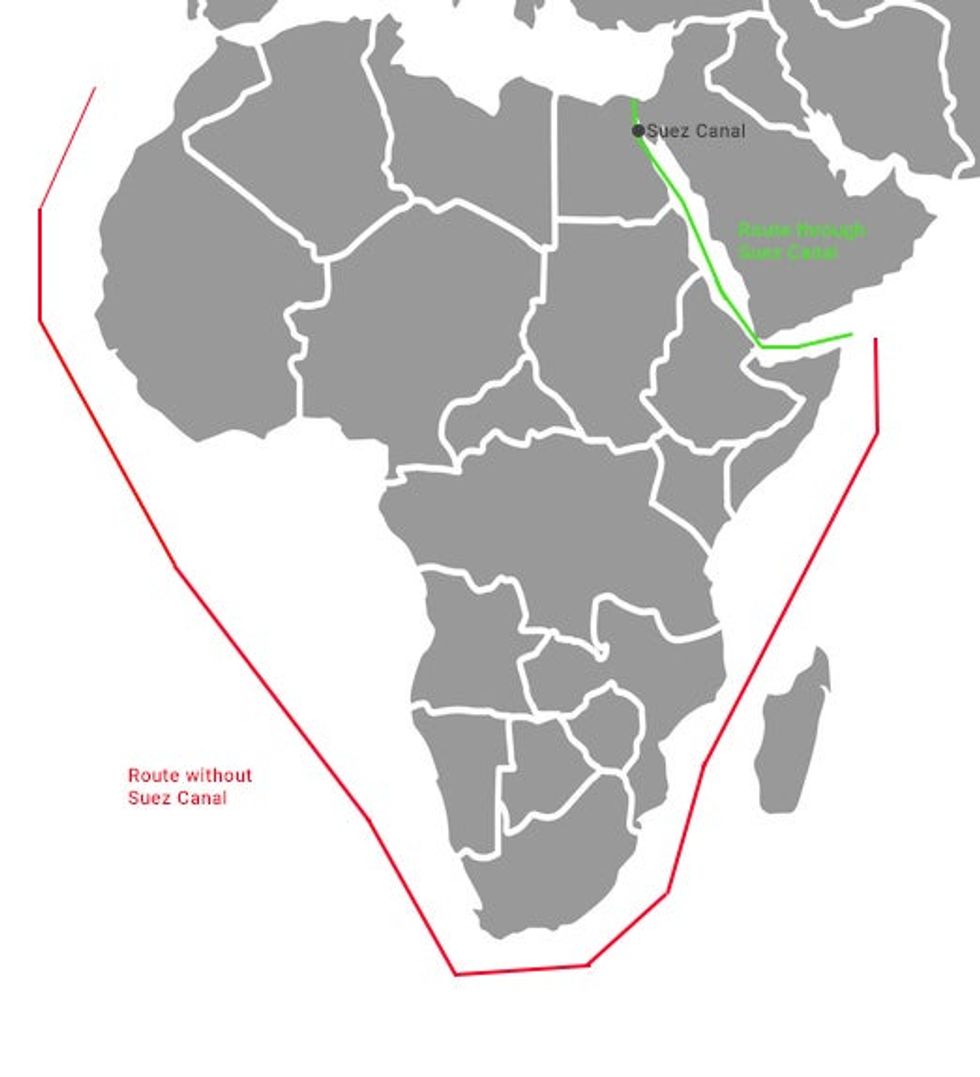Greg Evans
Mar 25, 2021
The Suez Canal has been open to the shipping freights of the world since 1869 and is, without doubt, one of the busiest maritime paths on the planet – responsible for around 12 per cent of the world’s trade.
Approximately 50 ships travel up and down the canal every day, connecting the Mediterranean Sea to the Red Sea. Its geographical location provides routes to the Middle East, Asia, East Africa, Europe and even North America.
If it wasn’t for the Suez Canal ships would have to take the long journey around the entire continent of Africa which would greatly extend the ships’ journey.
However, that is now a reality facing hundreds of ships attempting to use the canal.
On Tuesday, high winds causing a sandstorm, resulting in low visibility, caused the 400 metres long and 59 meters wide Ever Given ship, operated by Evergreen Marine from Taiwan, to literally get wedged between the two opposing banks of the canal.
Read more:
- Government buildings will have to fly the union jack every day and people are not impressed
- 25 of the best memes that got us through lockdown
- The internet has inevitably turned the Suez Canal block into a meme
- Simon McCoy’s best moments as newsreader to leave BBC and join GB News
The news caused much hilarity on social media as many thanked their lucky stars that they weren’t the skipper of the ship but, in reality, it is likely to cause chaos to the global shipping system.
A quick glance at the real-time shipping website Marine Traffic reveals, at the time of writing, that a cluster of ships, at each end of the canal are being forced to wait until the Ever Given is dislodged from its current predicament. However, experts fear that it could take days, even weeks to clear the path.
Ranjith Raja, who works for the financial data firm Refinitiv, is quoted as saying: “We’ve never seen anything like this before but it’s likely that resulting congestion will take several days to weeks to clear. It is expected to have a ripple effect on the other convoys, schedules and global markets.”
As of Wednesday, around 30 vessels reportedly waited in Egypt’s Great Bitter Lake, a halfway point along the Suez, while 40 waited at Port Said in the Mediterranean and another 30 waited in the Red Sea.
So are ships being rerouted?
Old sections of the port are said to have reopened in order to ease the congestion as the only other alternative route is to go around Africa.
Yep, navigate the entire continent, or use land, which is much more time-consuming and costly due to the number of vehicles it requires.
Yet, a number of global shipping companies have reportedly already embarked upon this convoluted option.
Seven tankers carrying liquefied natural gas (LNG) were diverted on Friday, according to The Guardian. Three of the tankers were being diverted towards the longer route around Africa, via the Cape of Good Hope, data intelligence firm Kpler said.
They added that the majority of the diverted tankers originally destined for the Suez are now headed elsewhere.
“A total of 16 LNG vessels’ planned transit via the Suez canal will be affected if the congestion persists until the end of this week,” said Kpleranlayst Rebecca Chia, who is based in Singapore.
Meanwhile, London-based shipbrokers Braemar reported that at least four Long-Range 2 tankers that initially appeared to have been heading towards Suez from the Atlantic basin were now likely to be evaluating a passage around the Cape of Good Hope. Each of these tankers can carry around 75,000 tonnes of oil.
The international shipping company Maersk also said on Friday that it was “looking at all alternatives” for its nine container ships stuck in the queues.
“Everyone is making contingency plans as we speak,” said Peter Sand, chief shipping analyst at BIMCO, according to CNN.

Recent history would suggest that the canal is becoming a less viable option for shipping firms. A report released in February 2016, showed that 115 vessels transporting goods from Asia to Northern Europe and the US avoided using the canal by sailing around South Africa. This was said to be in order to avoid the costly tariffs of the Suez and because of falling oil prices, making it cheaper for them to travel further.
Amazingly, the debacle with the Ever Given looks small fry to what happened to 14 ships in 1967. When a war broke out between Israel and their neighbouring countries, Jordan, Egypt and Syria, the canal was turned into a war zone. Egypt had no choice but to order ship to anchor in the Great Bitter Lake until the conflict subsided. Although the war only lasted six days, the ships ended up being stranded for eight years.
This was because Egypt took control of one side of the bank while Israel took control of the other side. The canal was then littered with mines effectively shutting the river down while authorities attempted to remove the explosives. The ships, from various European countries, became known as the ‘Yellow Fleet’ as they became caked in sand and when they were finally able to leave only two were deemed seaworthy.
At least that isn’t going to happen to the Ever Given...
More: This was supposed to be a year of change. The Colorado and Georgia shootings prove otherwise
Top 100
The Conversation (0)














